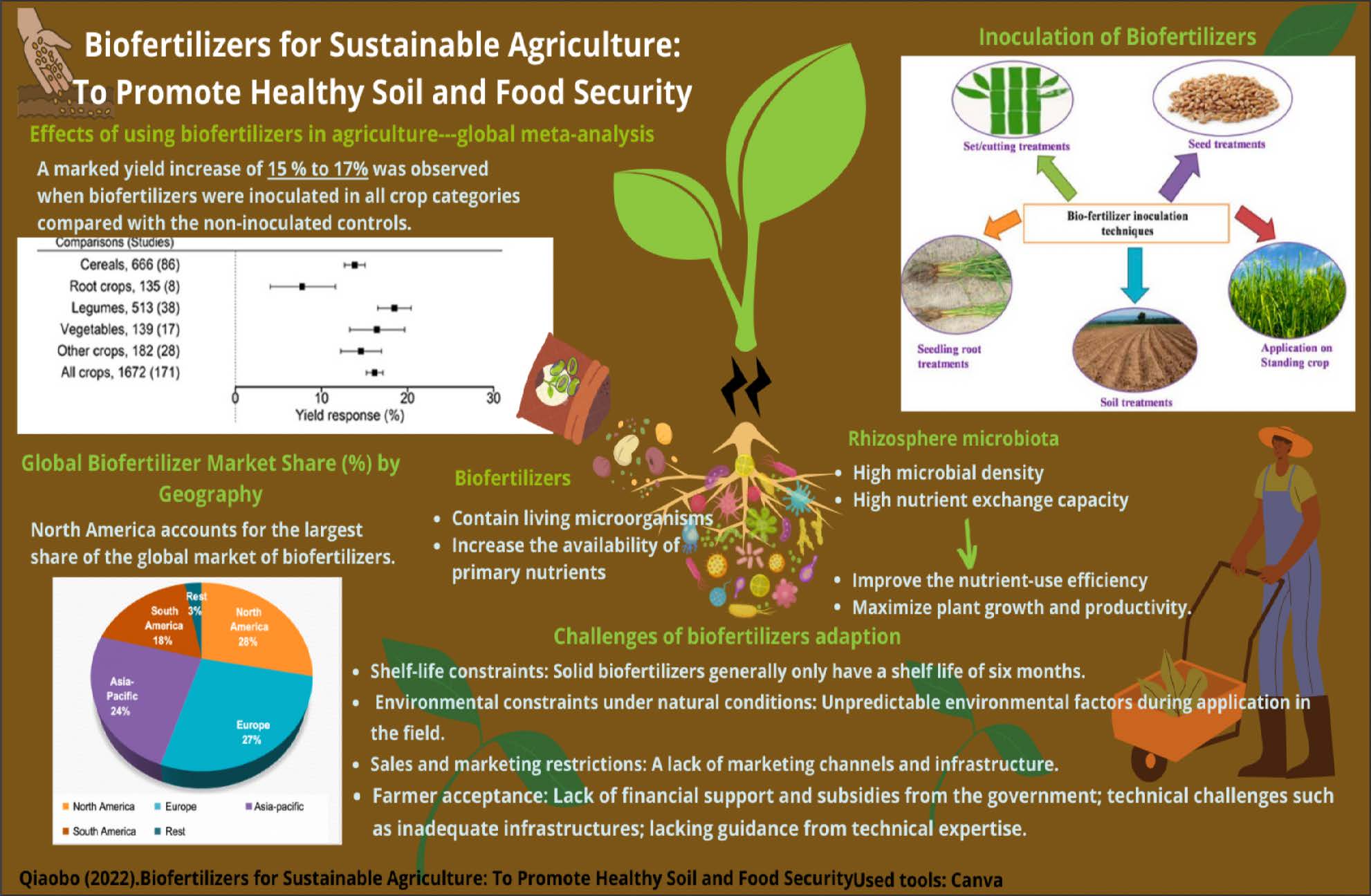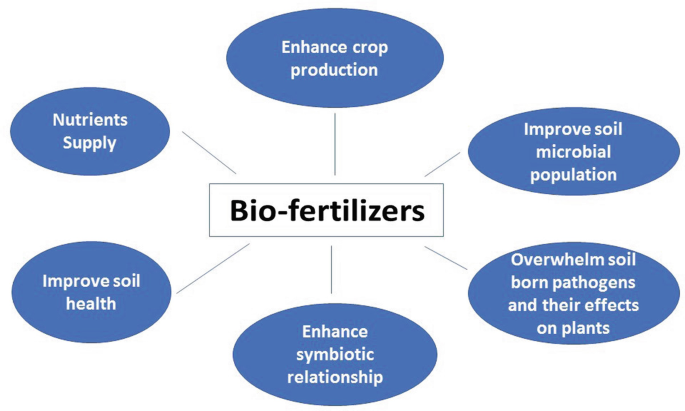Imagine transforming your garden into a lush paradise with just a sprinkle of nature’s magic. That’s the promise of biofertilizers.
As you dig your hands into the earth, seeking ways to nurture your plants, biofertilizers offer a natural and effective solution to boost soil health. These tiny powerhouses work wonders beneath the surface, enriching the soil with essential nutrients and promoting a thriving ecosystem.
If you’re tired of synthetic products that do more harm than good, it’s time to explore how biofertilizers can revitalize your garden. Ready to unlock the secrets of healthier soil and more vibrant plants? Dive into the world of biofertilizers and discover how they can transform your gardening experience.

Benefits Of Biofertilizers
Biofertilizers enhance soil health by enriching it with essential nutrients and beneficial microorganisms. These natural fertilizers improve soil structure, leading to better water retention and plant growth. They also reduce the need for chemical fertilizers, promoting a more sustainable farming approach.
Biofertilizers are becoming a game-changer for farmers and gardeners alike, offering a natural way to enrich soil and promote healthier plants. But what makes them so beneficial? The advantages of biofertilizers extend beyond merely enhancing growth. They play a critical role in improving soil structure, boosting nutrient availability, and fostering sustainable agricultural practices. Let’s dive into the specific benefits you can reap from using biofertilizers.Improved Soil Structure
Biofertilizers help improve soil structure by increasing its porosity. This means your soil can retain more water and nutrients, reducing the need for frequent watering and fertilization. A friend of mine who switched to biofertilizers noticed her garden retained moisture better, even during dry spells. Have you ever thought about how much time and effort you could save by having healthier soil?Enhanced Nutrient Availability
Biofertilizers make essential nutrients more available to plants. They contain microorganisms that convert nutrients into forms that plants can easily absorb. Imagine your plants having access to a buffet of nutrients, allowing them to grow stronger and more resilient. My tomato plants flourished after I started using biofertilizers, yielding bigger and juicier fruits. Wouldn’t it be great to see your plants thrive like that?Eco-friendly Solution
Biofertilizers are an eco-friendly alternative to chemical fertilizers, reducing environmental impact. They work in harmony with nature, supporting biodiversity and reducing pollution. Plus, they help cut down on chemical runoff into water systems. Consider the positive impact on your local ecosystem by choosing biofertilizers. It’s a small change that can make a big difference.Cost-effective Option
Using biofertilizers can be more cost-effective in the long run. While initial costs might seem higher, they reduce the need for other costly inputs over time. A neighbor shared how he saved money on pest control after switching to biofertilizers, as healthier plants naturally resisted diseases. Have you calculated how much you could save by investing in biofertilizers?Sustainable Agricultural Practices
Biofertilizers promote sustainable agriculture by encouraging practices that maintain soil health over the long term. They support organic farming and help reduce dependency on synthetic chemicals. Imagine contributing to sustainable food production while improving your yields. Isn’t it satisfying to know you’re making a responsible choice for the planet? Using biofertilizers is not just about improving plant growth; it’s about nurturing your soil and creating a more sustainable future. Have you considered making the switch yet?Types Of Biofertilizers
Biofertilizers are essential for maintaining soil health and fertility. They introduce beneficial microorganisms to the soil. These tiny helpers improve nutrient availability and plant growth. Let’s explore different types of biofertilizers that enhance soil quality.
1. Rhizobium Biofertilizers
Rhizobium bacteria are a key biofertilizer type. They form symbiotic relationships with leguminous plants. These bacteria fix nitrogen from the air. This enriches the soil with essential nutrients. Farmers often use Rhizobium for crops like peas and beans.
2. Azotobacter Biofertilizers
Azotobacter is another important biofertilizer. It is a free-living nitrogen-fixing bacterium. It thrives in non-leguminous plant roots. Azotobacter enhances soil fertility and structure. It is suitable for crops like wheat and rice.
3. Azospirillum Biofertilizers
Azospirillum bacteria promote plant growth in cereals and grasses. They also fix atmospheric nitrogen. This increases crop yields and soil vitality. Azospirillum is ideal for maize and millet cultivation.
4. Phosphate-solubilizing Biofertilizers
Phosphate-solubilizing bacteria make phosphorus available to plants. They break down insoluble phosphates in the soil. This enhances plant nutrient uptake. Crops like corn and potatoes benefit greatly.
5. Mycorrhizal Biofertilizers
Mycorrhizal fungi form symbiotic relationships with plant roots. They improve water and nutrient absorption. These fungi help plants resist drought and disease. Mycorrhizal biofertilizers are used in forestry and horticulture.
6. Cyanobacteria Biofertilizers
Cyanobacteria, or blue-green algae, fix atmospheric nitrogen. They improve soil fertility and structure. These biofertilizers are beneficial in rice paddies. They also enhance soil organic matter content.
Understanding these types of biofertilizers aids in selecting the right one. Each type offers unique benefits for different crops and soils.
Application Techniques
Enhancing soil health with biofertilizers involves strategic application techniques. Distribute them evenly over the soil for best results. Mix thoroughly to ensure nutrients reach plant roots effectively.
When you think about boosting soil health, the application techniques of biofertilizers play a crucial role. How you apply these natural enhancers can significantly affect their efficacy and your results. It’s not just about spreading them around; it’s about using the right method at the right time. This is where practical insights become invaluable. ###Soil Mixing Method
Mixing biofertilizers directly into the soil is a tried-and-true technique. You can do this when preparing your soil for planting. The key is to ensure that the biofertilizer is evenly distributed to maximize its benefits. Think of it like seasoning your favorite dish; you want every bite to have the right flavor. If you’re using a tiller, mix the biofertilizer to a depth of about 5-10 cm. This helps the microorganisms reach the root zone where they work best. ###Seed Treatment
Have you ever wondered how you can give your seeds a head start? Treating seeds with biofertilizers before planting can be highly effective. This technique ensures that beneficial organisms are present right from germination. You can do this by coating the seeds with a biofertilizer solution. Simply soak the seeds for a few hours or overnight. When planted, these seeds have an immediate boost, helping them to establish faster and stronger. ###Foliar Spray
Foliar spraying is another application technique that can yield great results. By applying biofertilizers directly to the leaves, you ensure that plants absorb nutrients quickly. This method is particularly useful for addressing immediate nutrient deficiencies. Imagine giving your plants a refreshing shower that also feeds them. Use a fine mist spray to cover the leaves evenly. This technique is perfect during the early morning or late afternoon to prevent sunburn. ###Drip Irrigation
Integrating biofertilizers into your drip irrigation system can be both efficient and effective. This method ensures a steady supply of nutrients directly to the root zone. Have you ever thought about how convenient it would be to fertilize while you water? The drip system does just that, saving you time and labor. It’s a smart way to combine tasks without compromising on plant health. ###Compost Enrichment
Enhancing your compost with biofertilizers before application can supercharge its benefits. This technique transforms your regular compost into a nutrient-rich powerhouse. Consider this as adding a turbo boost to your soil amendment efforts. Just mix biofertilizers with your compost pile. As the compost breaks down, it releases these beneficial organisms into the soil, improving fertility and structure. — Each of these techniques offers unique benefits and can be tailored to your specific gardening or farming needs. The goal is to find what works best for you, keeping in mind your soil type and crop requirements. What application technique will you experiment with next?
Challenges And Solutions
Biofertilizers offer an eco-friendly way to improve soil health. Yet, their adoption faces several challenges. Farmers often hesitate due to uncertainties. These challenges can hinder biofertilizer use. But solutions exist to overcome these hurdles. Let’s explore the main challenges and their solutions.
Understanding Biofertilizer Composition
Biofertilizers contain living organisms. Their effectiveness depends on the right mix. Farmers may not know the specific needs of their soil. Without proper knowledge, they might use the wrong biofertilizer. Conducting soil tests can help. These tests identify nutrient deficiencies. With this information, farmers can choose suitable biofertilizers. This ensures better soil health.
Storage And Shelf Life Issues
Biofertilizers have a limited shelf life. Improper storage can reduce their effectiveness. Farmers need suitable storage conditions. Many lack proper facilities. Biofertilizer companies can offer guidance. They can provide storage instructions. This ensures the biofertilizers remain effective until use. Farmers must follow these guidelines closely.
Applying biofertilizers correctly is crucial. Some farmers may not know the proper techniques. Incorrect application can waste resources. Training programs can help. They teach farmers the right methods. Proper application maximizes biofertilizer benefits. This improves soil health and crop yield.
Costs And Economic Viability
Biofertilizers can seem costly upfront. Farmers may doubt their economic benefits. But the long-term gains outweigh initial costs. Biofertilizers improve soil structure. This leads to better yields over time. Governments and organizations can offer subsidies. These financial aids make biofertilizers more affordable.
Lack Of Awareness And Education
Many farmers lack awareness about biofertilizers. They may not know their benefits. Educational campaigns can bridge this gap. Workshops and seminars can spread knowledge. They can highlight the advantages of biofertilizers. Informed farmers are more likely to adopt them. This ensures widespread use and improved soil health.

Conclusion
Biofertilizers offer a natural way to improve soil health. They enrich soil with essential nutrients. This results in healthier plants and better yields. Farmers and gardeners can benefit from using biofertilizers. It’s a step towards sustainable agriculture. Less chemical use means a safer environment.
Healthy soil leads to robust plant growth. Consider biofertilizers for a greener future. They are cost-effective and eco-friendly. Using them can transform your gardening experience. Give your soil the care it deserves. Your plants will thrive with this natural boost.
Make biofertilizers part of your regular farming practice.


